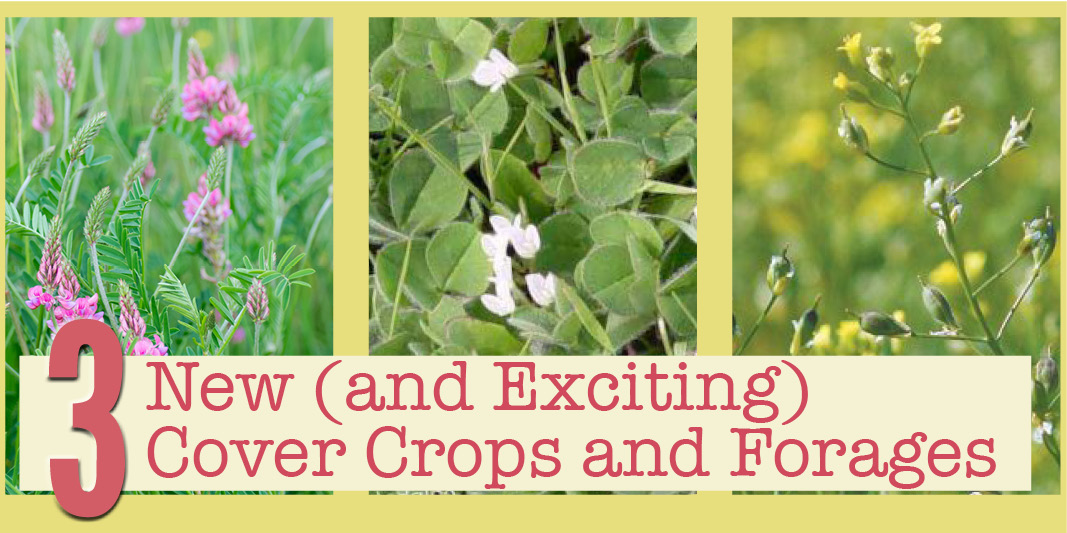3 New (and Exciting) Cover Crop and Forage Options
by Bairet Eiter
Cover Crops Lead & Organic Farming Support
If you’re looking for options for your cover crop rotation or to supplement your forage, check out these three newly added products in the Albert Lea Seed line up.
1. Sainfoin

Perennial Forage Legume
Sainfoin is a deep rooted, non-bloating perennial legume that can reach 3 feet or taller.
Best Use: Can be used in place of alfalfa as a hay crop, pasture, and cover crop or in a pollinator mix. Has better palatability than alfalfa and can be grown in areas where alfalfa struggles due to lack of precipitation. Cut at about 10% bloom but will not lose feed value as rapidly as alfalfa at flowering.
Adaptation: Suitable for dry land conditions that receive 12 inches or more of annual precipitation. Performs best in areas with deep, well drained soils with low water tables, because it is susceptible to root rot diseases.
Notes: Should not be grazed heavily or cut low: regrowth is dependent on photosynthesis. Allow at least six weeks of recovery prior to the first killing frost in fall. Not competitive with weeds during establishment. Avoid harvesting in the seeding year. Suitable companion for non-aggressive bunched grass species such as orchardgrass and tall fescue.
2. Subterranean Clover

Cool-Season Annual Legume
Subterranean Clover (aka “sub clover”) is a cool season annual that grows densely, matting the soil surface with stolon’s and stays low to the ground, reaching only 6 to 15 inches tall.
Best Use: Cover crop – its aggressive growth can smother weeds, especially where sub clover self-sowed. Also good for erosion control, fall plowdown green manure, and livestock forage. It is very palatable and productive and can set seed under heavy grazing pressure. Often used as a living mulch in orchards.
Adaptation: Prefers full sun but can tolerate up to 50% shade, making it a candidate for interseeding into a standing cash crop at last cultivation. Requires minimum of 12 inches or precipitation per year.
Notes: Sub clover will winter kill in cooler climates, which can work for farmers planting small grains or corn in early spring or for those wanting to avoid tillage as a way of termination. Kura clover is a winter-hardy alternative for farmers in northern climates looking for a similar cover crop to overwinter.
3. Winter Camelina

Winter Annual Brassica
Winter Camelina is a winter annual brassica oilseed crop that reaches a height of 1 to 3 feet with branching stems.
Best Use: Can be used as a double crop, relay crop or cover crop. Can be seeded in the fall after corn silage, canning crops, small grains, soybeans, field corn or flown on into standing corn at V6. Matures a few weeks earlier than small grains, making it suited for a corn/soy rotation with soy following in the rotation
Adaptation: Prefers lower moisture conditions and can be grown on marginal land. A viable option for farmers in climates with limited winter crop options.
Notes: Extremely small seeded with approximately 400,000 seeds/lb. Requires a very firm seed bed for good soil contact at a shallow depth and a weed-free field as camelina is not as competitive with weeds during establishment. Can be seeded in a mix with winter rye and hairy vetch, a winter-hardy trio!
See even more cover crop and forage options in our 2019 Albert Lea Seed Farm Seed Catalog.
